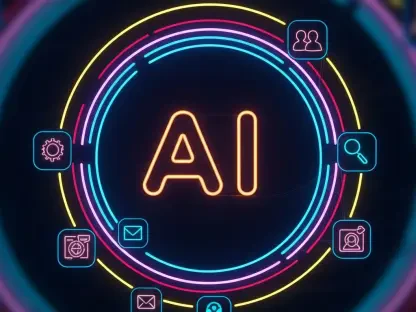With the proliferation of AI in today’s tech-driven world, media relations is witnessing a transformation characterized by enhanced efficiency and innovation. AI technology is increasingly utilized in public relations (PR) for tasks such as data analysis, story ideation, and targeting media pitches more effectively. However, as PR professionals draw on these capabilities, questions arise concerning the authenticity of AI-generated interactions. Journalists, recipients of numerous pitches, sometimes express skepticism about whether AI might be impersonating human outreach. This growing concern presents a challenge: integrating AI in a way that preserves genuine and authentic relationships in this evolving field.
AI’s Role in Transforming Media Relations
Embracing AI Tools and Techniques
AI has become integral to media relations, particularly in optimizing data processing and analysis. It allows PR professionals to parse through large volumes of complex data, such as survey results or social media trends, to pinpoint significant insights that can inform strategic decisions. By leveraging AI’s analytical prowess, media professionals can identify emerging patterns that necessitate quick responses or adjustments in strategy. For example, an upswing in consumer interest in a new technological feature can inform a proactive narrative pitch. This targeted approach not only saves time but also ensures the relevance of outreach efforts.
The application of AI also extends to media pitches by refining processes that were traditionally time-intensive. AI technologies aid PR professionals in identifying precise reporter profiles or media outlets that might resonate with specific stories, effectively enhancing the accuracy and impact of media outreach. While these tools are continually advancing, they provide significant potential in PR, where identifying the correct audience is crucial. Despite these technological advancements, the human element remains paramount, ensuring these interactions are meaningful and not merely algorithmic in nature.
Enhancing Story Ideation
AI aids in generating compelling story ideas, offering limitless angles and insights that invigorate media pitches. In story ideation, AI can act as a creative partner, pinpointing captivating angles typically overlooked during manual examination. By evaluating trends in areas like electric vehicles or sustainability, AI can propose unique perspectives that become the foundation of inventive media pitches, impacting industry conversations and attracting media attention.
In the creation of pitches, while some agencies explore AI-generated drafts, the primary focus is utilizing AI to shape outlines or explore different angles. Hence, concentration rests on augmenting, rather than supplanting, the creative process. By blending AI’s capabilities with human expertise, professionals can construct narratives with depth and originality. Furthermore, AI’s function in drafting preliminary ideas gives PR teams the flexibility to focus on refining and substantiating these concepts, ensuring that pitches truly resonate with their intended objectives and audiences.
Balancing AI with Human Insights
Maintaining Authenticity in Interactions
The rise of AI in media relations has led to concerns about authenticity, as many journalists become skeptical about interactions lacking a personal touch. It’s not uncommon for reporters to receive pitches that seem automated, with errors like incorrect salutations or content that doesn’t fit their focus, enhancing their suspicion. Ensuring the authenticity of communication remains vital to maintaining trust and credibility in media relations. Reporters highlight the importance of retaining a human touch, even when utilizing AI, to foster genuine connections.
In combating skepticism, incorporating a human element is key. For instance, integrating video responses or personalized follow-ups can reaffirm to journalists that those behind these interactions are real people, not just artificial constructs. Emphasizing human-led verification processes ensures pitches are not only accurate but also credible. Maintaining this balance between AI-generated efficiency and human authenticity is essential to building and sustaining strong media relationships, demonstrating that AI serves as an ally rather than a replacement in PR strategies.
Leveraging AI for Effective Media Targeting
AI’s potential extends to identifying suitable reporters and outlets, though it is an area still being refined. These systems analyze vast datasets to predict which journalists might find a particular story appealing, enhancing the strategic scope of media outreach. Predictions made by AI contribute to minimizing time spent on unsuitable pitches, ensuring that efforts are directed toward individuals more likely to engage. PR professionals employing these targeted approaches can enhance their relationships with the media, effectively augmenting their outreach capabilities.
While promising, the true challenge lies in ensuring these AI-driven suggestions are executed appropriately, balancing automation with personal touches that signify genuine engagement. As PR dynamics continue to evolve, the future may witness more precise AI models—offering nuanced understandings of media landscapes. However, it’s essential to recognize that no matter the technological advancements, human insights and relational intelligence will always play a significant role in sustaining meaningful interactions in the media realm.
Best Practices and Recommendations
Ensuring Human Oversight
AI-driven solutions, despite their accuracy and speed, can at times produce impersonal pitches or errors, impeding positive media relations. Instances of irrelevant content or incorrectly addressed pitches underline the need for human verification. Ensuring human oversight, especially before disseminating AI-generated content, is critical. PR practitioners can enhance message efficacy and credibility by verifying details, ensuring language aligns with client ethos, and maintaining tailored communications to each recipient’s taste and preferences.
Maintaining a human touch in media relations not only curbs automation pitfalls but also aligns with best practices that underscore relationship enrichment. Recommendations point toward integrating AI as a supportive adjunct rather than a substitute for human involvement. In doing so, media professionals maintain a system that merges efficiency with the depth of personal interaction, sustaining essential relationships and fostering trust in a rapidly digitizing marketplace.
Future Directions for AI in Media Relations
In today’s technologically advanced society, artificial intelligence (AI) is revolutionizing media relations with its ability to bolster efficiency and foster innovation. Public relations (PR) professionals are increasingly turning to AI for tasks such as analyzing data, brainstorming story ideas, and honing the precision of media pitches. This integration of AI raises pivotal questions about the authenticity of interactions generated by this technology. Journalists, often on the receiving end of numerous pitches, sometimes voice concerns about AI potentially masquerading as genuine human outreach. This escalating apprehension creates a unique challenge for PR experts: how to incorporate AI while maintaining authentic and meaningful relationships in an ever-evolving industry. Balancing technological advancements with the preservation of human connections is essential for PR professionals navigating this transformation, ensuring their approaches remain genuine and trustworthy, despite the AI’s growing presence.









